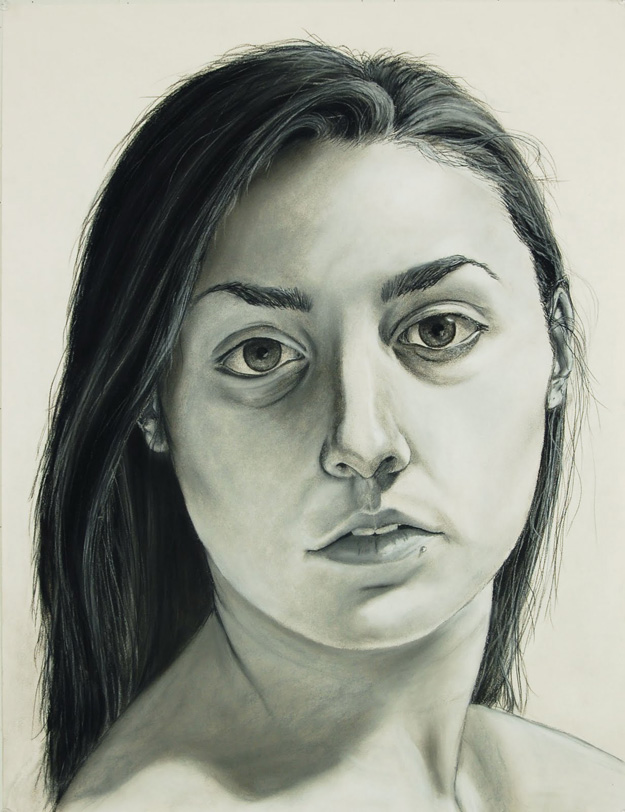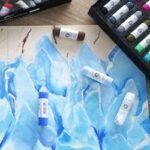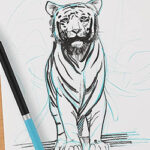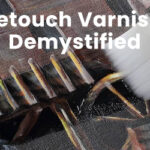How to Draw a Self-Portrait
5 Tips to Improve Your Self-Portrait Drawing!
Self-portrait drawing can be a great way to practice sketching techniques as-let’s face-it-there is no shortage of material when you draw yourself! Sketching or drawing yourself.
Sketching or drawing can be a great way to learn a lot about sketching, shading and proportions. And, when you sketch, your pictures can be kinda funny. They don’t always represent a subject the same way.
But, making a sketch of yourself, whether you use a picture or look in a mirror, can teach you a lot about art and yourself.
So, here are some tips on how to draw a self-portrait:

1. Start with a Light Sketch
Start with a light outline.
Position a mirror in front of you at a comfortable angle. This will allow you to observe your facial features and expressions while drawing. Begin by sketching basic shapes to establish the overall proportions of your face. Pay attention to the angles, curves, and distances between different facial features.
Everyone thinks they know the proportions of a face, but when you really study the human face, its easy to realize that the eyes are not near the top of the head. Instead, they are about half way between the crown of the head and your chin. When you are learning how to draw a self-portrait, get the major features first. Sketch them lightly, to create a foundation so you can add in your details later. This way, if you make a mistake, you can easily erase it and it wont affect the minute details you will spend more time creating later on.
2. Add Shadows and Smudge Them
To make your self-portrait drawing look professionally done, add shadows.
Study the lighting conditions and the way light falls on your face. Observe the highlights, mid-tones, and shadows. Incorporate these elements to add depth and dimension to your portrait.
You will want to go lightly here as well. To create realistic shadow effects, use a smudging tool or your finger to draw out the shadows. This will blend the medium you use whether it is graphite, charcoal, or pastel and your shadows will end up lighter and easier to clean up in case you make a mistake.
Lighting is important when finding shadows and one of the best ways to properly “light” yourself is to use top-lighting or lighting from above. This is something to take into consideration when you take the photo you will use to do your self-portrait or, during your set-up if you plan to use a mirror.
3. Do Your Hairline After You Outline
One of the trickier parts when learning how to draw a self-portrait is knowing when to do the hairline. Start with the head and work out the proper length. Fill it in with thick lines, then add shadowing and highlights as you go along. Outline first and sketch the hairline afterward.
4. Fine Details Come Last
After you have the outline and some of the shading done, it’s time for the fine details. Focus on capturing your individuality and unique features. Pay attention to details such as the shape of your eyes, the curve of your lips, or any distinctive facial features that make you recognizable.
Take some time filling in places in the eyes and lips, and also add some more shadowing to the neck so that your face doesn’t have the appearance of floating in the air. The finer details are the ones that really the portrait lend to the realistic quality of a self-portrait.
And, a little extra tip, (4.5) if you’ve used pencil, you can add some color at this point with colored pencils or even watercolors.
5. Choose a good frame
If you like your portrait drawing, choose a great frame for it. A nice frame can complement your art nicely and highlight your sketching skills. A simple black frame is nice when using charcoal, or something made of light wood goes best with soft colors.
And if you ever get tired of drawing your own image, you can always get together with a friend and practice drawing portraits of each other. Or, do a portrait of yourself and have your friend do one of you as well. Don’t look while they are in progress, but afterwards, compare and contrast. Our perspectives can vary substantially from individual to individual.
Remember, creating a self-portrait is a personal and subjective endeavor. Embrace your own unique style and interpretation of your features, and have confidence in your artistic expression.
Learning how to draw a self-portrait is a fun challenge. If the only thing holding you back are materials like drawing paper and drawing supplies, Jerry’s Artarama has you covered.
Our Mission! We carry the largest selection of professional art supplies at the best prices. Shop online today and start portrait drawing in no time!
More Resources
- WHAT’S THE BEST OILS? – The Best Oil Paints
- LIVE VIDEO AND SUPPLIES – Pencil or Paint? Try Water Soluble Graphite Products
- LIVE VIDEO AND SUPPLIES – Light Boxes and Drawing Aids
- Article – How to Improve Your Drawing Skills





